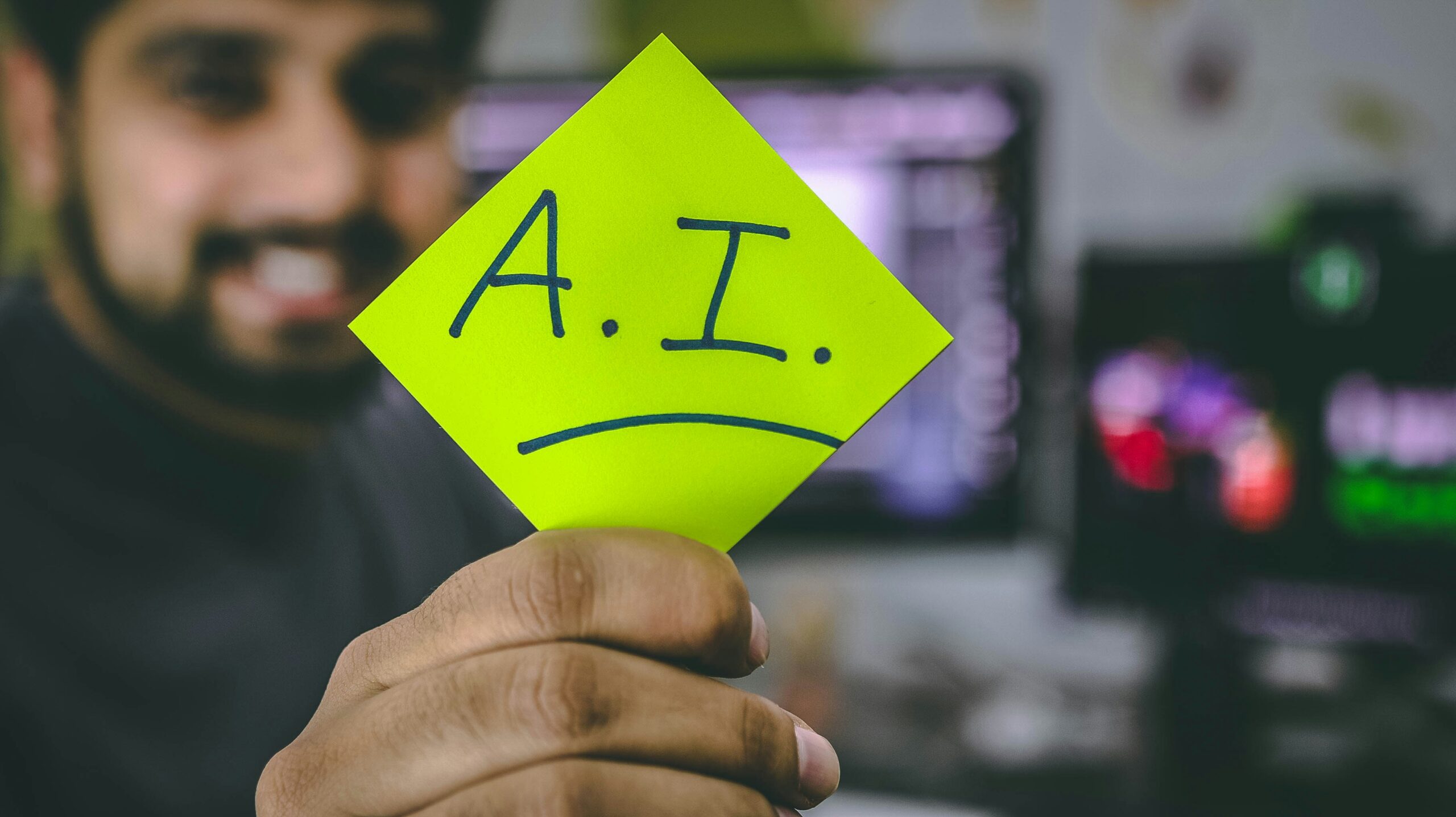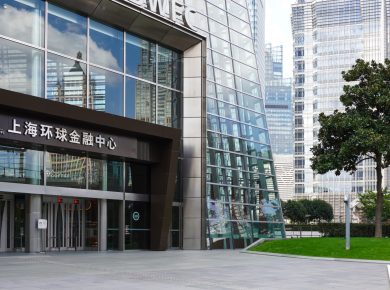AI and ML are not slogans, they are already changing the world as we know it, and understanding the fundamentals of both is crucial. In healthcare, finance, entertainment, and transportation on self-driving cars or auto-pilot planes, change is underway with the help of AI and, more specifically, ML.
The following is a brief view of ways in which these technologies can transform business in the world. Read more similar posts on our business page of the site.
1. Revolutionizing Healthcare
It is encouraging to note that AI and ML are poised to bring similar transformations to the healthcare sector, by enhancing diagnostic tools, treatment overviews, and overall treatment and care.
With the help of machine learning, it’ll be possible to analyze substantial amounts of medical information and establish patterns and potential illnesses.

For instance, radical diagnostic applications can learn and analyze cancer cells in images of body scans better than physicians do and offer adequate treatments in the earliest stage.
In addition, it can also provide a means to improve precision medicine through varying treatments based on genetic characteristics.
Smart clothing containing AI technology is capable of tracking the patient’s basic life signs and signalling important problems that require medical attention to the patient and the providers before they reach a dangerous stage.
2. Enhancing Education
Education is another area, where AI and ML can help a lot. Education education-adapted learning system employs machine learning to learn about the student’s performance, achievements, and limitations.
These applications can adapt the level of the lessons to cater to the needs of each learner and make him or her progress through the lessons with interest instead of getting bored or overwhelmed.
Supplements can be provided by automated tutoring environments that supplement classroom explaining that difficult concepts can be explained by an AI tutor to a learner in case he or she does not get it in a classroom.
In addition, predictive analytics can assist teachers to select students who are likely to experience difficulties in learning and address the issue right away which in turn may boost students’ educational performance.
3. Transforming Transportation
The function and application of the Transport industry are heavily set to change with Artificial Intelligence & Machine learning.
Self-driving cars are being developed with the help of complex computers with AI algorithms, which will enhance safety, cut down on traffic fatalities, and optimize the usage of the roads and fuel.
Even though self-driving cars will use sensors and cameras to capture huge amounts of information around them, the information gathered will processed in real time to allow the car to drive safely and effectively.
However, it is not just the self-driving cars that are getting smarter; Artificial Intelligence has expanded to improve the public transportation systems.
The aims of machine learning include the identification of efficient routes, prediction of the time when certain parts of the transport means may require maintenance, and optimal scheduling of the operation, all of which would enhance the viability of public transportation.
This not only improves the usability of the products but also helps in their effective management and thus leads to the conservation of our environment.
4. Revolutionizing Finance
AI and ML are redefining the possibility of the future and their influence is becoming widespread in the financial sector progressively: from customer service to fraud detection.
Social media is being used to engage customers daily while AI is used to attend to their queries and or perform transactions.
One more important application of supervised machine learning can be combating fraud by analyzing patterns and outliers in the transaction stream and using the results to enhance security.
Also, there exist AI applications in investment strategies. Most robo-advisors invest in these financial markets utilizing machine learning algorithms to advise clients on investment opportunities and how best they can be invested, cheaper than hired financial advisors.
5. Enhancing Entertainment and Media
Just as AI and ML have revolutionized the entertainment and social media industries by being able to recommend content that meets their viewer/audience’s needs.
Netflix and Spotify popular streaming services utilize in-depth user targeting, and recommendation systems, which employ the use of machine learning algorithms.
Such user targeting enhances the use of the website by the users and makes the entire experience quite enjoyable.
Furthermore, AI is also being implemented in the design of the content. For instance, AI can write music, news, and even draw art pieces which is not only a wider form of creating but is also helpful in a way that the amount of content that can be produced is enormous.
6. Improving Environmental Sustainability
In other words, the practical utilization of AI and ML has a powerful contribution to make toward overcoming environmental issues.
Public service can be made faster, and alerts can be given over natural calamities so that necessary measures can be taken.
There is scope in using machine learning to influence energy usage in smart Grid that exists within homes and businesses.
Also, various artificial intelligence systems can be useful for understanding environmental changes in real time and can also help in the conservation process.
For example, AI can assist in documenting the numbers of endangered species, identifying violations of the preservation of plants and forests, assessing air and water pollution levels, and thus contribute to maintaining the health of our planet.
The capabilities of AI and ML as a phenomenon are vast and can be considered as a way to significantly transform the world.
Many of these technologies are contributing to innovations in distinct business sectors while solving some of the biggest problems in the world today.
More such complications are likely to arise in the future due to the advancement in AI, and ML because it will only extend its influence towards making the world better in terms of efficiency, personalization, and sustainability.
As such, acceptance of these technologies plus knowledge of what they can and cannot offer will be important as we progress.
It means that if AI and ML technologies are used responsibly in terms of their implications, they will be capable of making the world a better place to live, to make it better, and to improve people’s lives around the globe.
7. Case Studies and Examples of AI and ML Transforming the World
As can be seen from the presented ideas, Artificial Intelligence and Machine Learning are not just a theory but the practice of their usage is actively being implemented in numerous fields, proving that they are capable of revolutionizing various industries. Here are some compelling case studies and examples showcasing how these technologies are changing the world:
a. Healthcare: In the case of oncology, the tool is called **IBM Watson for Oncology**.
Case Study
This is an application of Artificial Intelligence called IBM Watson for Oncology that helps doctors find out the cause of this deadly disease and helps them in the treatment process as well.
Watson reads through thousands of documents or patient and clinical data and provides the best treatment advice based on the doctors’ findings.
Example
An unintended use of Watson was reported by Wall; a patient with an uncommon type of cancer received a standard treatment regime plus an experimental medicine that was recommended by Watson.
These efforts yielded positive outcomes with improvements in this patient’s status which speak to the effectiveness of integrating AI in sonography and healthcare delivery in general.
b. Education: Another effective and innovative program that can be considered for financing is Carnegie Learning’s Cognitive Tutor.
Case Study
In Carnegie Learning, there is the Cognitive Tutor, an intelligent software tool that teaches mathematics with the help of Artificial Intelligence.
The system incorporates ML techniques to identify the strategies the students are using in solving the problems and adjusts the process or information presented based on their learning.
Example
For instance, a study in several schools where students had to work together with Cognitive Tutor had their scores in mathematics improve by 100 per cent more than the other students who performed the traditional studies.
The suggestions made by this software which ensure that users get relevant facilities based on the unique needs that a particular student has helped to enhance the performance of the learners.
c. Transportation: Waymo’s Autonomous Vehicles
Case Study
However, the primary actor that has been associated with the development of such vehicles is Waymo, which is an Alphabet Inc. company.
Similarly, Waymo’s AI systems involve the collection of sensors, and cameras, and then integrating the data with ML algorithms to drive through urban ones.
Example
In Phoenix Arizona, Waymo service introduced robo taxi and started providing economic self-driving cab service.
Self-sufficient cars with an AI technique performed on-road driving and moved thousands of passengers safely in the city, making a great test of autonomous vehicles.
d. Finance: JPMorgan Chase’s COiN
Case Study
JPMorgan Chase develops an AI platform, called Contract Intelligence (COiN), which can read through documents and find specific data.
This kind of task which in the traditional method will involve individuals like lawyers and loan officers, is now done automatically and with high accuracy.
Example
To understand it more comprehensively, let’s consider the example of COiN: it helped to cut the time required for reviewing the agreements on commercial loans from 360, or hours per year to mere seconds.
This automation also cuts down outright the bank labour expense and the likelihood of mistakes on the part of personnel.
e. Entertainment: Netflix’s Recommendation Engine
Case Study
Netflix utilizes the power of ML through its recommendation engine by tracking and studying the users’ habits to recommend programs or movies that the user may enjoy.
Example
Netflix claims that the recommendation system is responsible for more than 80% of the consumption of shows on the platform.
This is evident through the recent addition of recommendations where Netflix has won the hearts of many viewers to stay with them for a longer time, proving the role of AI in engagement.
f. Environmental Sustainability: As for Google, DeepMind division, and large data centres
Case Study
One of the areas where DeepMind AI was deployed was the energy consumption optimization of Google’s data processing centres.
Within the data centers, there were thousands of sensors, and the AI changed the levels of the cooling systems, based on the data obtained in real-time.
Example
This implementation brought about a saving in cooling energy of 40% as well as an overall enhancement in absolute energy efficiency by 15%.
Such substantial cost savings showcase the potential of AI in facilitating the minimization of the outputs’ negative impact on the environment, particularly in huge businesses.
g. Retail: Amazon’s Predictive Analytics
Case Study
There is sophisticated AI and ML utilization of both, which helps the company to predict demand, and stock volumes, as well as offer tailored shopping experiences.
Example
Another effective method proposed by Amazon is a recommendation of goods reflecting the behaviour and preferences of consumers, despite the product type, which has led to the growth of sales.
Furthermore, technology outcomes within predictive analytics advanced Amazon in streams such as stock suggestions and delivery ratio, thus improving the customer experience.
h. Agriculture: John Deere’s Precision Agriculture
Case Study
Various technologies including Artificial Intelligence and Machine Learning have been incorporated into John Deere farming equipment to help achieve precision farming.
Their machines include sensors and AI algorithms to look at the status of crops or soil and to decide the planting patterns to be used.
Example
Farmers utilizing the John Deere AI, have mentioned that their crops are healthier thus increasing their yields and using less fertilizers and water.
This precision farming solution does not just improve crop yields but also increases sustainability in farming practices.
i. Public Safety: As discussed in the context of PredPol’s Predictive Policing
Case Study
The identity of PredPol is that it employs the use of ML algorithms in analyzing crime data to determine which areas are most prone to recurrent criminal activities.
The knowledge they provide serves the purpose of enabling investigations and allocating assets accordingly.
Example
It has been observed time and again that the implementation of PredPol, which is presently employed in cities such as Los Angeles and Atlanta has greatly reduced crime rates.
Some of these cities have reported reduced burglary, car theft, and other crimes because of these policing strategies through preemptive deployment of police in areas likely to be plagued with violence.
j. Customer Service: Chatbots and Virtual Assistants
Case Study
Some examples of organizations employing AI-powered chatbots include the likes of Bank of America which uses Erica for customer support inquiries.
With these bots it is possible to have Customer relations; the bots can answer questions, do transactions; do customer relations, and personal assistance.
Example
Artificial intelligence for customer support service, Erica of Bank of America has currently dealt with tens of millions of customers’ questions, with all of them addressed and resolved without the involvement of a live human being.
This has been effective in enhancing also the quality of the services offered to the customers as well as effectiveness in cost cutting for the organization.
Conclusion
We observed the melted variety of AI and ML employment in various sectors from the presented case studies and examples.
Over the years, these technologies have come to solve most of the problems we face today directly, and with the ever-increasing advancements in these fields, efficiency will only increase and we will welcome a new age of innovation and progression.








